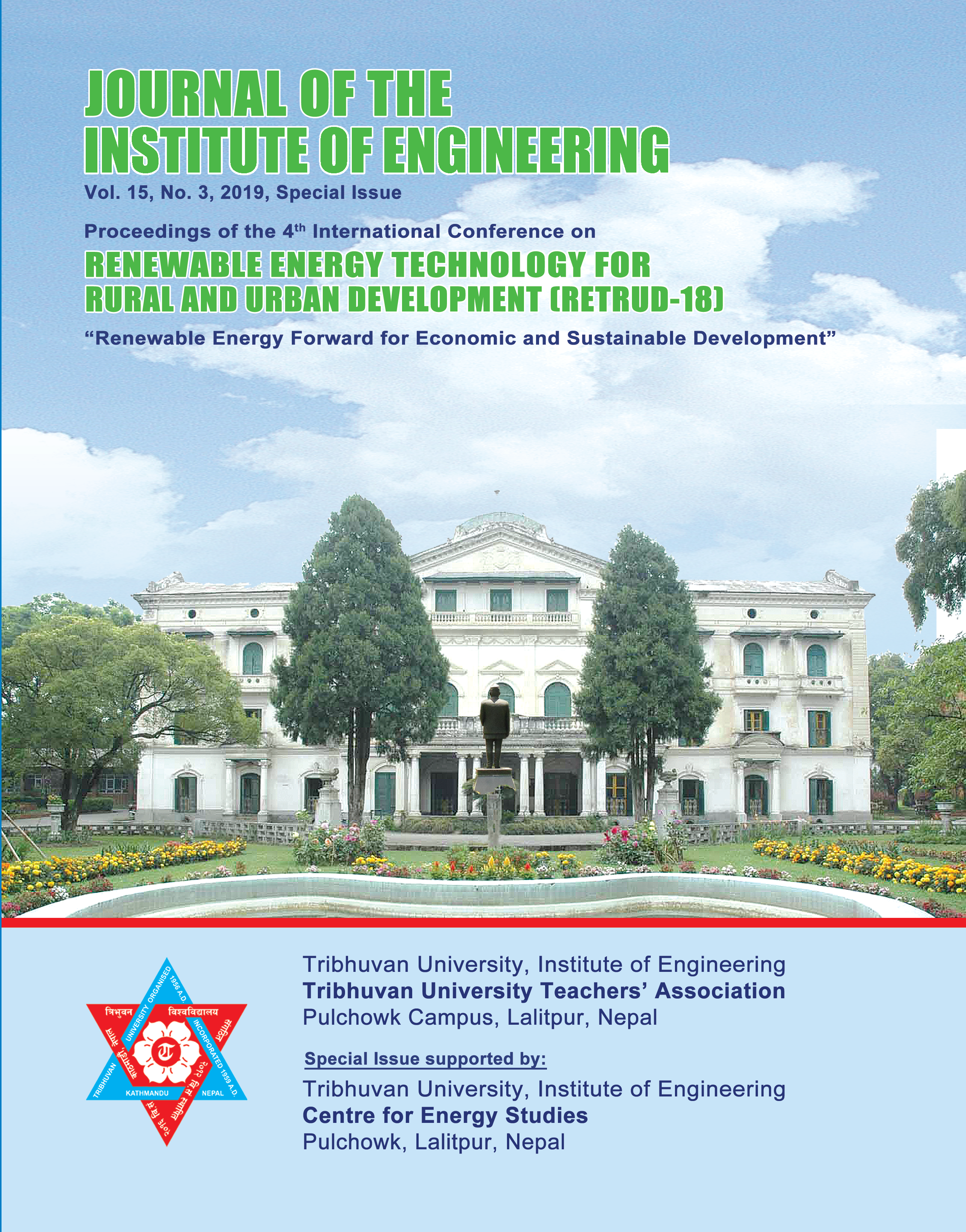Overview and Feasibility of Floating Solar Photovoltaic System in Nepal
DOI:
https://doi.org/10.3126/jie.v15i3.32194Keywords:
Floating Solar Photovoltaic System (FSPV), PV Cell Efficiency, Solar Feasibility, Techno-Economic AnalysisAbstract
As a next generation technology, Floating Solar Photovoltaic (FSPV) System has had a remarkable growth in the field of Renewable Energy since 2014 with an installed capacity of more than 200 MWp as of 2017. Interest in FSPV system is on the rise compared to its land-based counterpart due to significant benefits like an increased efficiency of the panel, omission of land-related cost and cost of the mounting structure along with environmental benefits like water conservation of the reservoir through a reduced rate of evaporation and containment of algae boom. In this paper, the overall benefit of exploiting FSPV system in case of Nepal has been explored and the techno-economic feasibility of such system in Nepalese scenario has been analyzed. Improvement in efficiency of the panel has been calculated mathematically which also seems to support results from previous works. After analyzing the techno-economic benefits, it was found that FSPVs, even though having a marginal financial profit at current PPA rate of Rs. 7.3/kWh, can still prove beneficial if used concomitantly with storage type hydropower plants.
Downloads
Downloads
Published
How to Cite
Issue
Section
License
The Copyright is held by Journal of the Institute of Engineering, IOE, TU




